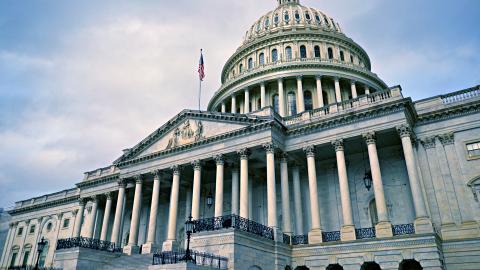In the immortal words of Yogi Berra, it’s déjà vu all over again. In an all-too-familiar scene, an American president is currently at an impasse with Congress over how best to increase the debt ceiling. Biden and Congressional Democrats appear to want an increase in the debt ceiling with virtually no conditions attached. Republicans, meanwhile, want to condition the debt increase on specific reductions in federal spending.
When you scratch the surface, it’s easy to see why many Americans want to limit future debt spending. The debt ceiling currently sits at $31.4 trillion. You read that right—$31.4 trillion, with a “t.” That equates to nearly $100,000 for every American alive today. For a family of four, that’s a burden of nearly $400,000.
By comparison—in 2003, the debt limit was a measly $7.3 trillion. Measly in comparison, that is. If you do the math—it’s more than quadrupled in the time since. In dollars and cents, that increase equates to more than $70,000 for every man, woman, and child in this country.
If given a choice, it’s hard to imagine that most Americans would choose such spending over a check for $70,000 cash. That’s because it’s difficult, if not impossible, to point to any federal programs that make this country demonstrably better off today than it was back when Finding Nemo ruled the box office and Friends was still on the air. Unlike last century, there are no post office murals or Hoover Dams to point toward.
If you think that’s bad—this is only the beginning. OMB is currently projecting deficits of at least $1.5 trillion per year for the next five years. There isn’t a single federal forecast currently in existence—not one—that predicts federal budgets will ever balance under current law. Consider also that government forecasts are often optimistic, undercounting future liabilities. The end result is that even with no new spending programs—literally ever—the federal debt ceiling will have to be increased every year from now until eternity. And of course, such a scenario isn’t exactly likely.
As for the current standoff between the White House and Capitol Hill—most political observers predict that Congress will cave to the president’s debt limit request. Indeed, over the past few decades, Congressional leaders have occasionally sought to link debt ceiling increases to future spending limits. All such efforts have failed. Congress has always buckled to presidential demands for unqualified increases to the debt ceiling.
This time, however, might be different. Here’s why.
First, the cost to the federal government of borrowing money has increased to levels not seen since 2007, just prior to the Great Recession. That’s because the federal funds rate currently sits above 5%. While this might benefit some limited amount of cash savers burrowing away money in high-yield savings accounts, the reality is that countless more Americans are paying more for auto loans and mortgages. Not to mention Americans cumulatively owe a whopping $930 billion in credit card debt—more than at any time during the Great Recession. When businesses and households face higher interest rates, they reasonably try to cut back on spending and reduce their debt. America should act likewise.
Second, the fastest growing expense for the federal government is not entitlement programs, but instead interest on the debt. OMB projects that net interest payments will more than double from $475 billion in FY2022 to more than $960 billion in FY2028. If federal spending is higher—or interest rate increases are greater—than OMB assumes, the increase will be even greater than that. This alone is a good reason to take deficit reduction seriously.
Third, we live in truly extraordinary economic times. For the first time since the 1980s, America is maintaining large deficits relative to GDP and the federal funds rate is above 5%, all while the country is not (yet) currently experiencing a recession. And of course, in the ’80s, the federal debt was between 50 and 70% of GDP. Today, that figure is north of 120% with no end in sight.
Despite existing as a country for more than two centuries, nearly all of America’s debt has been accrued in the past 50 years alone. And it’s only gotten worse in recent years. Some political pundits claim that America’s ballooning debt has not had adverse economic consequences, and publicly muse whether there is any harm in increasing the debt forever.
Such musings are wrong and discount several important factors. For one, there’s the opportunity cost of it all. Undisciplined public spending has almost certainly crowded out more disciplined private spending on countless projects and programs. And then there’s math. Much like households that can’t keep up with the monthly bills when their credit card debt compounds and their interest rate is hiked, America’s growing interest payments threaten to spiral out of control—particularly when interest rates increase, like they’re doing now.
Perhaps worst of all is the existential threat America’s debt problem poses to us as a country. Unburdened with relatively little debt, America has been able to meet existential crises such as the Civil War and World War II by incurring significant debt to pay for guns, tanks, planes, and all manner of things to protect the homeland. In the meantime, our reservoir of borrowing capacity has been significantly depleted by routine, rather than emergency, spending.
It appears that the White House is betting that Congress will increase the debt ceiling without conditions. It’s past time that reasonable minds address the root cause of America’s spiraling debt: out-of-control government spending.
















